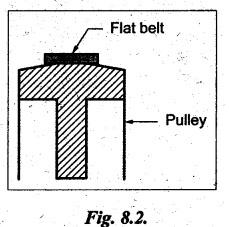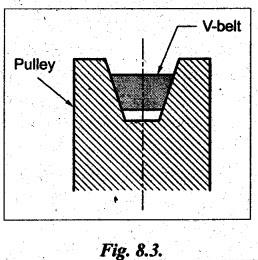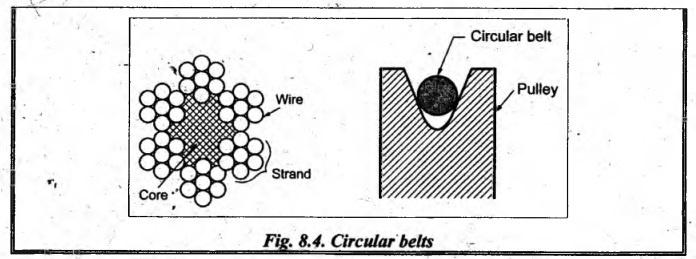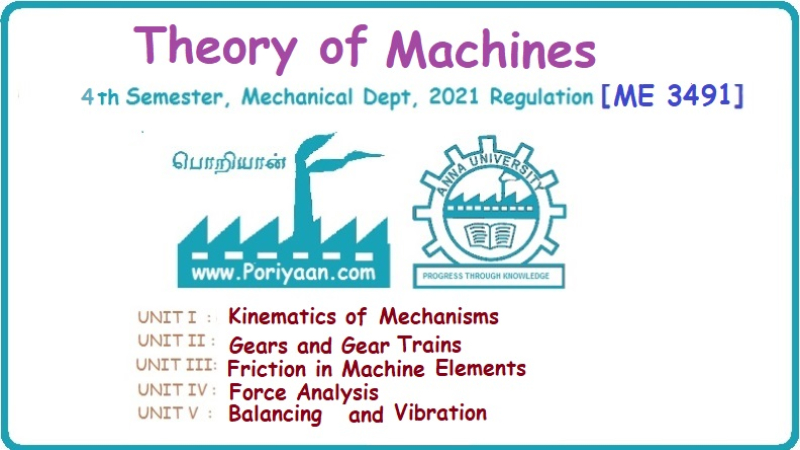Theory of Machines: Unit III: Friction in Machine Elements
Types of belts
Friction in Machine Elements - Theory of Machines
Based on the shape of cross-section of the belts, belts are classified as flat belts, V-belts and ropes, as shown in Table 8.1.
TYPES OF BELTS Based on the shape of cross-section of the belts, belts are classified as flat belts, V-belts and ropes, as shown in Table 8.1. Table 8.1. Types of belts 1. Flat Belts • Flat belts are of rectangular cross section, as shown in Fig.8.2. • It is used to transmit moderate amount of power. • Distance between the two pulleys: Less than 10 metres. • Applications: Factories, workshops, coir mills, flour mills, etc. 2. V-Belts • V-belts are of trapezoidal cross-section, as shown in Fig.8.3. • V-belt is more compact, quiet, shock absorbing and positive drive. • It is also used to transmit moderate amount of power. • Distance between the two pulleys: Less than 5 metres. • Applications: Wet grinders, lathes, factories, etc. 3. Ropes (or Circular Belts) • Ropes are circular in cross-section, as shown in Fig.8.4. • It is used to transmit more power. • Distance between two pulleys: More than 10 metres (upto a maximum of 30 metres). • Applications: Factories, mining, hauling, sewing machines, etc.


Theory of Machines: Unit III: Friction in Machine Elements : Tag: : Friction in Machine Elements - Theory of Machines - Types of belts
Related Topics
Related Subjects
Theory of Machines
ME3491 4th semester Mechanical Dept | 2021 Regulation | 4th Semester Mechanical Dept 2021 Regulation
